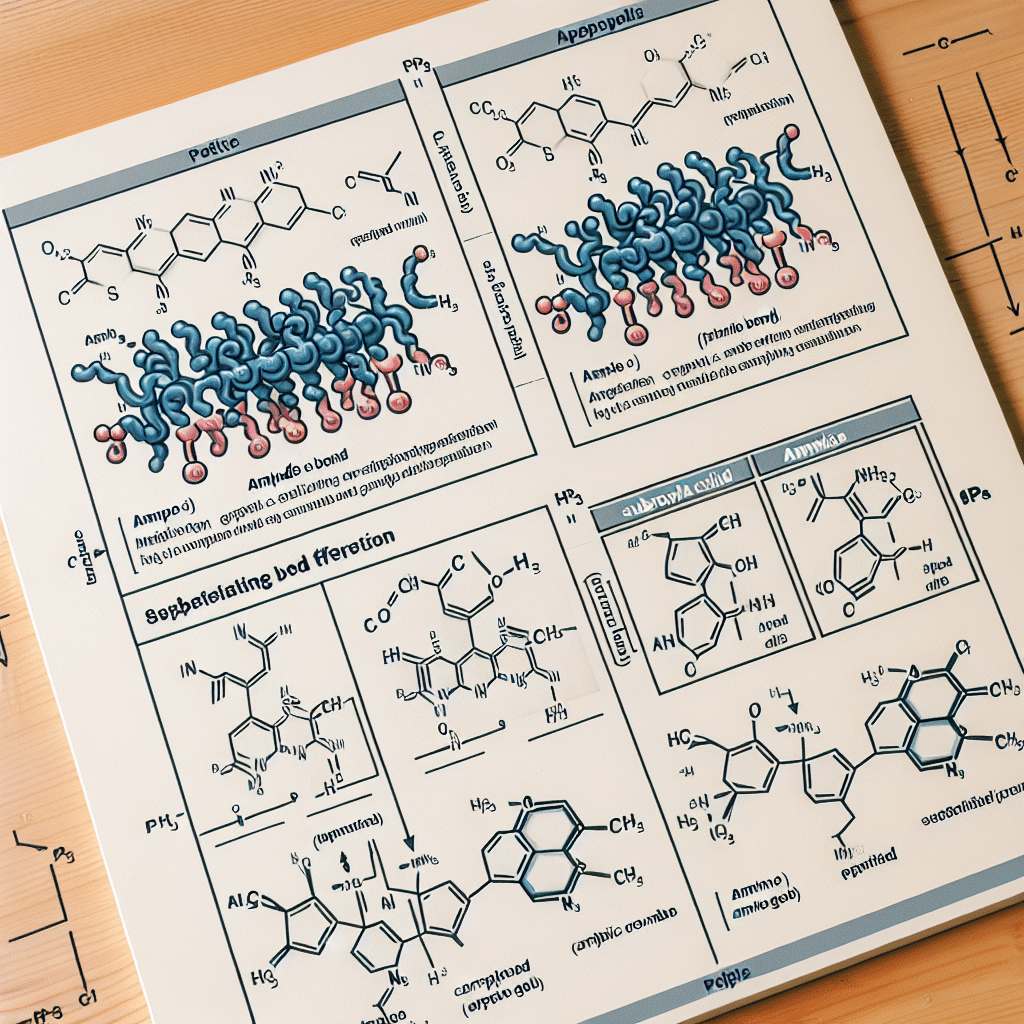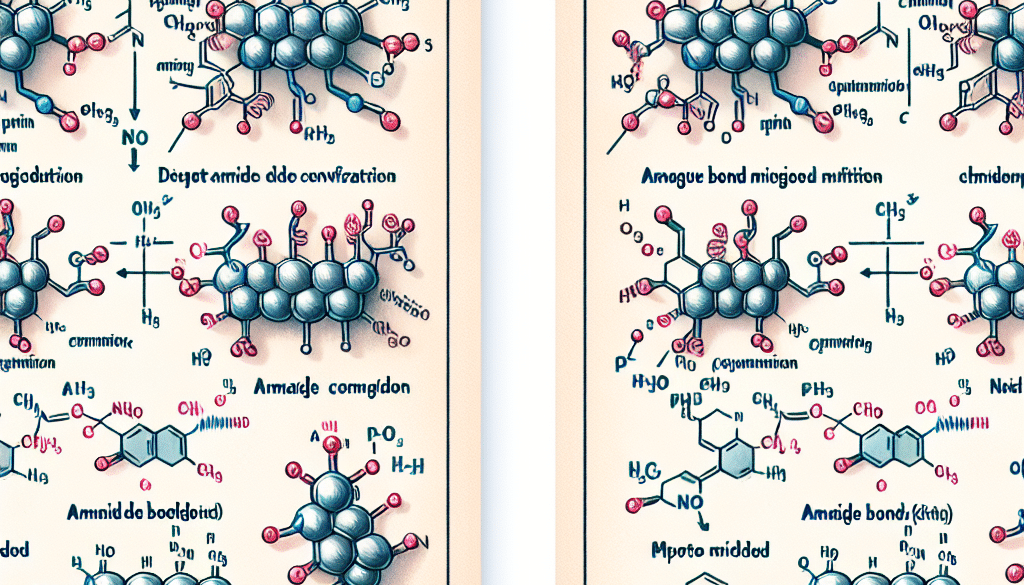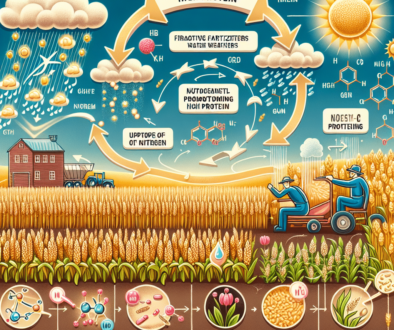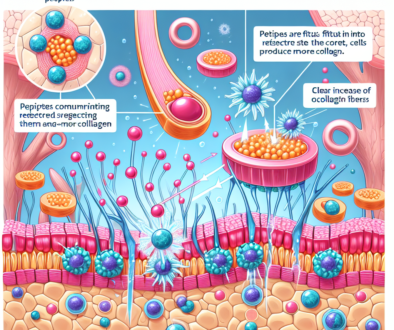What Is The Difference Between Peptides And Peptoids?
-
Table of Contents
- Peptides vs. Peptoids: Understanding the Key Differences
- Introduction to Peptides
- Introduction to Peptoids
- Structural Differences Between Peptides and Peptoids
- Functional Differences and Implications
- Applications in Research and Medicine
- Case Studies and Examples
- Conclusion: Key Takeaways
- Discover High-Quality Protein Products from ETprotein
Peptides vs. Peptoids: Understanding the Key Differences

In the realm of biochemistry and pharmaceuticals, peptides and peptoids are two classes of molecules that often come up in discussions about drug design, therapeutic treatments, and molecular biology. Despite their similar-sounding names and related structures, peptides and peptoids are distinct entities with unique properties and applications. This article delves into the differences between peptides and peptoids, exploring their structures, functions, and the implications for research and medicine.
Introduction to Peptides
Peptides are short chains of amino acids linked together by peptide bonds. They are essentially small fragments of proteins and play a crucial role in various biological processes. Peptides can act as hormones, neurotransmitters, growth factors, and enzymes, making them vital for the proper functioning of living organisms. They are synthesized naturally in the body and can also be produced synthetically for use in research and therapeutic applications.
Introduction to Peptoids
Peptoids, or poly-N-substituted glycines, are a class of peptidomimetics, which means they mimic the structure of peptides but with a twist in their chemical backbone. Unlike peptides, peptoids have a modification in the peptide bond that involves the side chains. This modification gives peptoids unique properties, such as increased stability and the ability to evade proteolytic degradation, which is the breakdown of proteins by enzymes.
Structural Differences Between Peptides and Peptoids
The primary structural difference between peptides and peptoids lies in the backbone of the molecules. In peptides, the amino acid side chains are attached to the alpha carbon atoms, whereas in peptoids, the side chains are attached to the nitrogen atoms of the peptide backbone. This seemingly small change has significant implications for the stability, flexibility, and overall shape of the molecules.
- Peptide Bonds: Peptides have a conventional amide bond, which is formed between the carboxyl group of one amino acid and the amino group of another.
- Peptoid Bonds: Peptoids have a modified backbone where the side chains are bonded to the nitrogen atom, resulting in a structure known as a N-substituted glycine.
Functional Differences and Implications
The structural differences between peptides and peptoids lead to distinct functional properties. Peptides, being natural components of cells, are recognized by the body’s enzymes and can be susceptible to degradation. Peptoids, on the other hand, are more resistant to enzymatic breakdown due to their altered backbone, which can make them more stable in biological environments.
- Biological Stability: Peptoids are generally more stable than peptides in biological systems, which can make them more suitable for therapeutic applications where longevity in the body is essential.
- Specificity and Binding: Peptides often have high specificity for their target receptors or enzymes due to their natural occurrence in biological systems. Peptoids can be designed to mimic this specificity while potentially avoiding off-target effects.
- Immunogenicity: Peptides can sometimes trigger immune responses, which may limit their therapeutic use. Peptoids are less likely to be recognized by the immune system, reducing the risk of immunogenic reactions.
Applications in Research and Medicine
Both peptides and peptoids have found applications in various fields of research and medicine. Peptides are widely used in drug development, as therapeutic agents, and as tools for studying biological processes. Peptoids, with their enhanced stability and versatility, are being explored for similar uses but with the added benefit of potentially improved pharmacokinetic properties.
- Drug Development: Peptides and peptoids are used in the design of new drugs due to their ability to interact with specific targets in the body.
- Therapeutic Agents: Peptides are used in therapies for diseases such as diabetes (insulin) and multiple sclerosis (interferon beta-1a), while peptoids are being investigated for similar uses.
- Diagnostics: Both peptides and peptoids can serve as biomarkers or diagnostic tools due to their specific binding properties.
Case Studies and Examples
One notable example of peptide-based therapy is the use of insulin for the treatment of diabetes. Insulin is a peptide hormone that regulates blood sugar levels. Synthetic versions of insulin are used to manage diabetes in patients who cannot produce enough insulin naturally.
In contrast, peptoids have been studied for their potential use in treating antibiotic-resistant bacterial infections. Their stability and ability to mimic natural antimicrobial peptides make them promising candidates for new types of antibiotics.
Conclusion: Key Takeaways
In summary, peptides and peptoids are both important molecules in the field of biomedicine, but they differ significantly in their structure and function. Peptides are natural amino acid chains that play diverse roles in biological systems, while peptoids are synthetic mimics with altered backbones that offer increased stability and reduced immunogenicity. These differences make peptoids particularly interesting for drug development and therapeutic applications where enhanced durability and specificity are desired.
Understanding the distinctions between peptides and peptoids is crucial for researchers and medical professionals as they continue to explore and develop new treatments for a variety of diseases. As the science of peptidomimetics advances, we can expect to see more innovative uses for these versatile molecules in improving human health.
Discover High-Quality Protein Products from ETprotein
If you’re looking for premium protein products, ETprotein offers an extensive range of organic bulk vegan proteins and L-(+)-Ergothioneine (EGT) suitable for various industries. Their products are characterized by a neutral taste, non-GMO, allergen-free attributes, and high purity levels, making them ideal for nutraceutical, pharmaceutical, cosmeceutical, and food and beverage applications.
ETprotein’s specialization in exporting and delivering tailor-made protein powder and finished nutritional supplements ensures that you receive the best solutions for your protein needs. Trusted by leading global brands, ETprotein is your go-to source for high-quality protein products.
About ETprotein:
ETprotein, a reputable protein and L-(+)-Ergothioneine (EGT) Chinese factory manufacturer and supplier, is renowned for producing, stocking, exporting, and delivering the highest quality organic bulk vegan proteins and L-(+)-Ergothioneine. They include Organic rice protein, clear rice protein, pea protein, clear pea protein, watermelon seed protein, pumpkin seed protein, sunflower seed protein, mung bean protein, peanut protein, and L-(+)-Ergothioneine EGT Pharmaceutical grade, L-(+)-Ergothioneine EGT food grade, L-(+)-Ergothioneine EGT cosmetic grade, L-(+)-Ergothioneine EGT reference grade and L-(+)-Ergothioneine EGT standard. Their offerings, characterized by a neutral taste, non-GMO, allergen-free attributes, with L-(+)-Ergothioneine purity over 98%, 99%, cater to a diverse range of industries. They serve nutraceutical, pharmaceutical, cosmeceutical, veterinary, as well as food and beverage finished product distributors, traders, and manufacturers across Europe, USA, Canada, Australia, Thailand, Japan, Korea, Brazil, and Chile, among others.
ETprotein specialization includes exporting and delivering tailor-made protein powder and finished nutritional supplements. Their extensive product range covers sectors like Food and Beverage, Sports Nutrition, Weight Management, Dietary Supplements, Health and Wellness Products, and Infant Formula, ensuring comprehensive solutions to meet all your protein needs.
As a trusted company by leading global food and beverage brands and Fortune 500 companies, ETprotein reinforces China’s reputation in the global arena. For more information or to sample their products, please contact them and email sales(at)ETprotein.com today.












